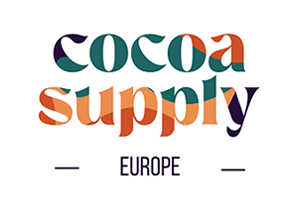Rethinking Sugar: A New Era in Chocolate Making
For centuries, traditional chocolate making has relied on cane sugar to balance cacao’s natural bitterness and create the smooth, indulgent taste we know and love. However, the chocolate industry is evolving as health-conscious consumers seek ways to reduce their sugar intake. Chocolatiers and bean-to-bar makers are exploring alternative sweeteners that maintain the sensory experience of chocolate while offering lower glycemic impact, enhanced nutritional benefits, or more sustainable sourcing.
Why Reduce Sugar in Chocolate?
Many consumers want to reduce their refined sugar intake due to concerns about metabolic health and blood sugar regulation. As consumer preferences evolve, there is growing interest in chocolate with lower sugar content or natural alternatives that align with modern dietary trends. Beyond perceived health considerations, this shift is also driven by sustainability, flavor complexity, and popular lifestyles such as keto, paleo, and whole foods-based eating. This shift has driven demand for alternative sweeteners, including fruit-based options like cacao fruit pulp, honey, and coconut sugar.
For chocolate makers, transitioning away from refined sugar is both an opportunity and a challenge. While alternative sweeteners offer unique benefits, they also introduce new complexities in formulation, texture, and storage stability.
Alternative Sweeteners: Pros & Cons
1. Coconut Sugar
- Pros: Lower GI, rich in minerals, caramel flavor, easy to substitute
- Cons: Hygroscopic, grainier texture, more expensive
2. Monk Fruit Sweetener
- Pros: Zero-calorie, heat-stable, low glycemic
- Cons: May need fillers, potential gut health concerns, lingering aftertaste
3. Panela (Unrefined Cane Sugar)
- Pros: Nutrient-rich, deep flavor, less processed
- Cons: Higher moisture, same glycemic impact, batch variability
4. Lucuma Powder
- Pros: Low GI, fruity sweetness, added nutrients
- Cons: Less sweet, affects texture, expensive
5. Yacon Syrup
- Pros: Prebiotic, very low GI, good mouthfeel
- Cons: High water content, digestive sensitivity, not heat-stable
6. Stevia
- Pros: Zero-calorie, heat-stable, highly concentrated
- Cons: Bitter aftertaste, needs blending, may cause digestive discomfort
Impact on Texture & Shelf Life
Beyond taste, alternative sweeteners also affect the texture, mouthfeel, and longevity of chocolate.
Crystallization & Mouthfeel
Cane sugar has well-studied crystallization properties, giving chocolate a smooth texture. Alternative sweeteners like coconut sugar and panela have coarser granules, requiring additional refining or conching.
Moisture Content & Storage
Some sweeteners, like coconut sugar and panela, absorb moisture more easily, which can lead to softening, bloom, or shorter shelf life in chocolate bars.
Flavor Complexity & Balance
Alternative sweeteners introduce new flavor notes, which must be considered when developing chocolate recipes.
Stability in Chocolate-Making Processes
Sugar alcohols do not caramelize the same way as sugar, impacting tempering and viscosity. Liquid sweeteners may require emulsifiers.
Finding the Right Sweetener for Your Chocolate
Classic Flavor with Healthier Edge: Use coconut sugar or panela.
Keto-Friendly Option: Try monk fruit or stevia.
Nutrient-Dense Sweetness: Lucuma powder.
Best Structural Match: Panela or coconut sugar.
The Future of Alternative Sweeteners in Chocolate
As consumer preferences evolve, the use of alternative sweeteners in chocolate is expanding. New innovations are enhancing chocolate’s complexity while maintaining its beloved experience. From sugar-free bars to nutrient-dense confections, the future of chocolate formulation is full of creative possibilities!

